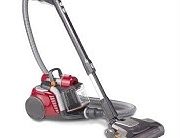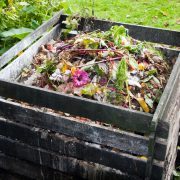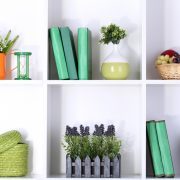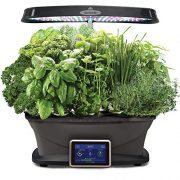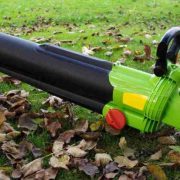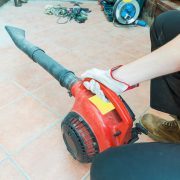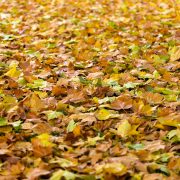Probably the Electrolux Vacuums reviews have given you all the information you need to know about the impressive vacuum cleaners of this leading brand.
But have they given you the guidance about factors that you need to look into while getting your next Electrolux Vacuum?
We’re assuming the answer is a big NO as reviews were just telling what the tech does, but not how to pick the right one.
Well, don’t worry; we’re about to get that part covered. All you need to do is just scroll a bit down to check what’s waiting below.
Considerable Aspect While Choosing an Electrolux Vacuum
According to Allgreatvacuums.com the brand Electrolux, doesn’t bring in a single one but three different types of vacuum cleaners in their product line. So, the factors that make an Electrolux vacuum pickable varies on the basis of that. Let’s check them out then?
Upright Vacuums
If you’re looking for vacuum models that are popular and also come with additional parts like hoses, upright vacuums are the right ones for you. The additional hoses make it easier to reach not only any part of the floor but also elevated surfaces.
The best thing about this type of vacuum is they come with a wide yet powerful cleaning path. This means you can easily clean up larger areas within a short time. If you’re planning to clean hard surfaces, rugs, and bigger carpeted areas, then this one type can be the perfect pick.
Now, the question is, what should you look into when you’re planning to get one from Electrolux? Well, here’s your answer.
- Suction Power
First of all, look into the suction power as that’s what is going to be the most useful feature when it comes to cleaning. For upright vacuum cleaners, 180 to 200AW is perfect. But if it’s cordless, 80 to 100AW will be enough.
- Bin Capacity
It’s always better to go with the higher number. But if you’re looking for an ideal number, then we’d say try to pick something with 0.75 – 1 liter capacity.
- Air Filtration
It plays a vital role in preventing the dust from spreading around that you’ve just sucked. The best one so far we’ve seen for that role is the HEPA filter. So, try picking something that includes one.
- Noise
For obvious reasons, noise is an irritating part of vacuum cleaners. So, when you’re getting an upright vacuum, make sure that it doesn’t exceed the noise level of 70-80 dB.
- Weight
As you’re going to carry the vacuum around, pay some attention to the weight too. Don’t go for anything that exceeds 13-18 lbs.
Canister Vacuums
If you’re more into cleaning hard surfaces, stairs, or smaller carpeted areas, then canister vacuums are probably what you’re looking for. This type of vacuum is high on cleaning and suction power.
And yes, it comes with the bagless and bagged option, which gives the user a scope to pick the preferred one. But what we like the most about it is flexible hoses that can reach almost anywhere.
Like any other vacuum cleaner, this one too has certain aspects that you should look into.
- Suction Power
Higher suction power is always preferred when you’re asking for powerful suction performance. Try to get something with a suction power of around 300AW or more.
- Bagged or Bagless
Prioritize your preference here. The bagged one can keep the mess to the minimum. On the other hand, the bagless ones are more cost-efficient.
- Telescoping Wand
The best thing about telescopic wands is – it makes reaching difficult places easier. So, before you swipe your card, check if the vacuum cleaner’s wand is telescopic or not.
- Corded or Cordless
If you’re getting a corded one, check the length of the cord as a small cord can restrict your movement. And if you’re thinking about getting a cordless one, check out its run time in all the modes.
- Canister Capacity
Like the upright ones, you need to have an eye on the canister capacity. 1 liter is more of an ideal number for this type of vacuum cleaner. And yes, also check if the canister can be washed or not.
Stick Vacuums
When you’re asking for something efficient for cleaning up a small floor or surface, this type of vacuums can be really helpful. Their smaller size and lighter weight have made them simply handy.
Besides, due to having longer handles, reaching tough spots becomes easier. On top of that, as some of the stick vacuums are battery-powered, you can roam anywhere in the house with it without looking for a power outlet.
But while picking one of those, you need to make sure that you’re checking out its following aspects.
- Cordless or Corded
When you’re in need of a cleaning tech for longer cleaning sessions, we say you better go with corded ones. That’s because the batter-powered one might run out of juice in a while where the corded ones can keep going.
- Weight
Try to pick something within a weight of 3 to 6 lbs. The reason is – the lighter it’ll be, the easier it’ll be to handle.
- Run Time
There are two types of run time – in the minimum mode and high mode, when it’s the battery-powered one, of course. With high mode, it takes more power and runs for less amount of time. 15-20 minutes is a decent amount of time there.
On the other hand, when it’s in the minimum mode, it’ll require less power and run for longer. The time can be something like between 45 to 60 minutes. Don’t think about getting a cleaner less than this.
- Charge Indicator
When there’s a battery powering the cleaner, the need to have a charge indicator pops up. So, if you feel like you need that as well, pick a cleaner with one.
- Bin Capacity
As the cleaner itself is kind of small, the bin capacity will be low too. But don’t think about going for anything with less than around 0.5L bin capacity.
- Noise Level
For stick vacuums, 60 dBA is a comparatively tolerable noise level. So, try to stick to it while buying one.
- Nozzle Headlight
This type of cleaner is good at handling narrower spots. But without some light, that might be a little tough. So, having a nozzle headlight might make things a lot easier.
- Detachable Handset
Try choosing a cleaner with a detachable handset. After all, it can make small cleaning tasks way easier than it already is. With that, you can turn it into the same handheld vacuum in no time, which will be more convenient to handle.
Bottom Line
None of the Electrolux Vacuums reviews can fully be useful if you don’t know how to pick one. We hope we’ve got that part covered, as now you know what factor you actually need to put into your list of ‘cross checking’ before you swipe that card of yours.

